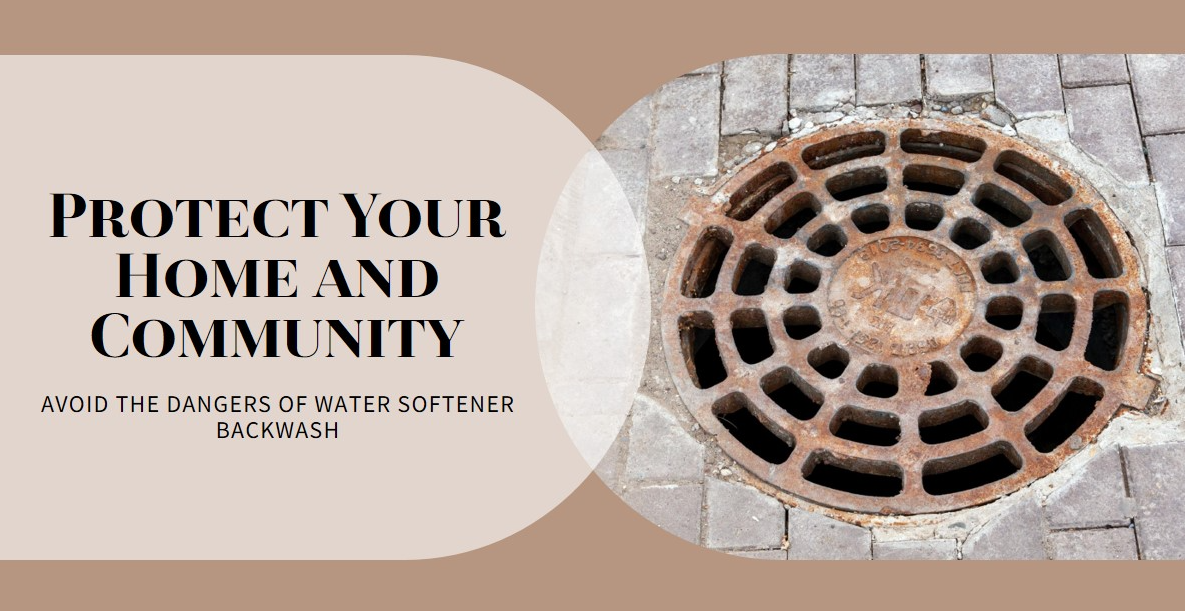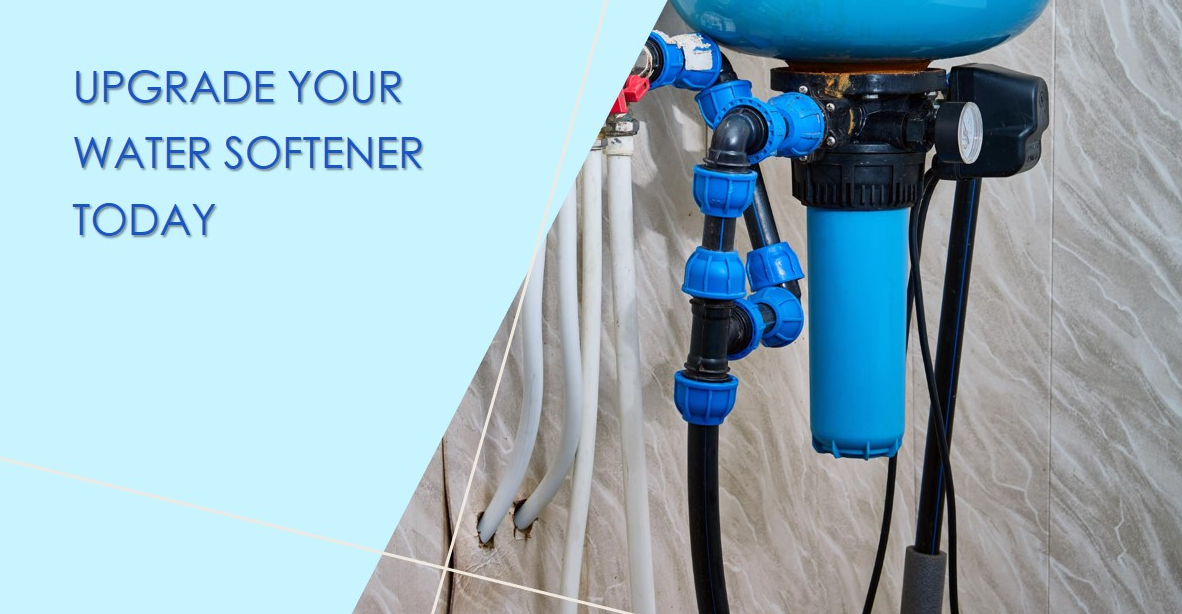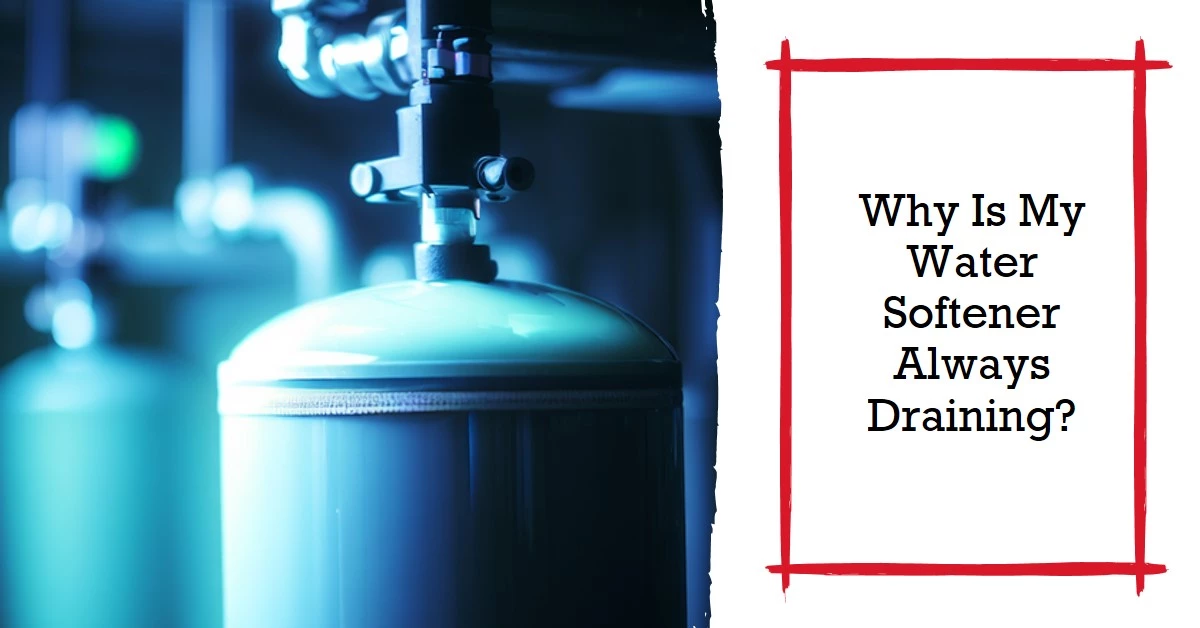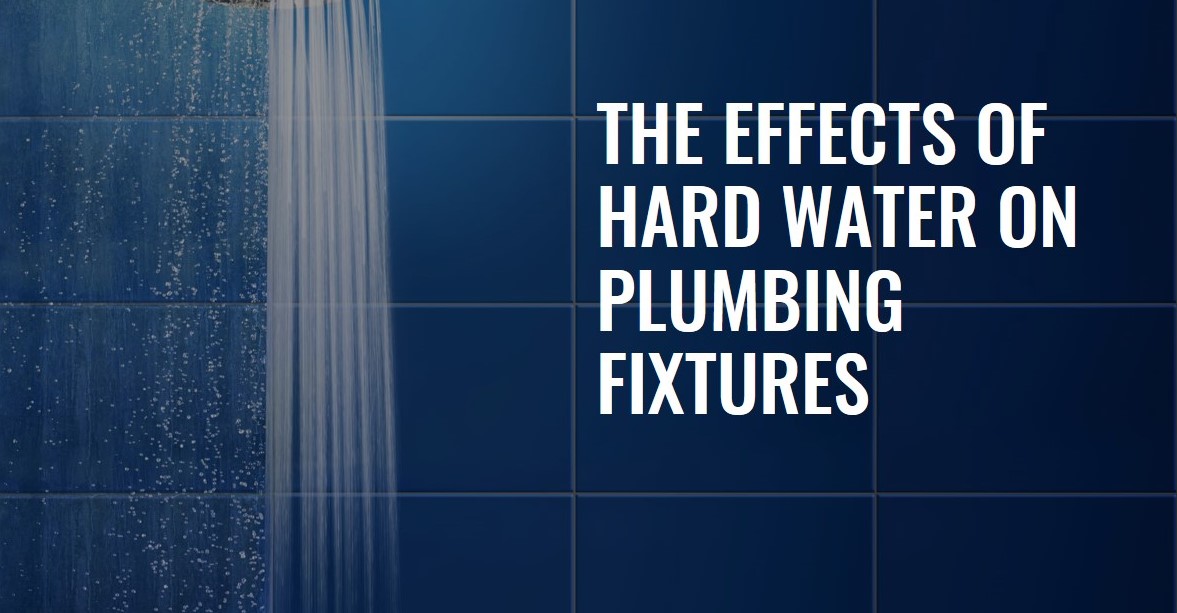Discharging water softener backwash into the sewer can pose several risks that homeowners should be aware of. Water softener backwash contains high concentrations of sodium, chloride, and other minerals that can damage sewer infrastructure, contaminate water supplies, and harm the environment if not disposed of properly. Understanding the potential risks is key for homeowners with water softeners to make informed decisions about backwash disposal.
An Overview of Water Softeners and How They Work
Water softeners are whole-house filtration systems that remove minerals like calcium and magnesium from hard water. The minerals bind to soap, leaving behind soap scum and mineral deposits. Softened water prevents these issues, helping household appliances like dishwashers and washing machines run more efficiently.
Water softeners work through a process called ion exchange. Inside the softener tank are tiny resin beads that attract and latch onto the calcium and magnesium ions that cause hardness. As hard water passes through the tank, the resin beads capture the mineral ions and exchange them for sodium ions. The sodium ions do not cause hardness or soap buildup.
Over time, the resin beads become saturated with calcium and magnesium. To refresh the beads, water softeners go through a regeneration cycle. First, the resin bed is backwashed with water to remove any accumulated dirt and sediment. Next, a concentrated salt solution (brine) flows through the tank. The brine causes the resin beads to release the calcium and magnesium ions in exchange for new sodium ions.
The resulting backwash effluent is a salty mixture concentrated with hardness minerals like calcium, magnesium, iron, and manganese. This backwash must be disposed of properly to avoid potential risks.
Why Discharging Water Softener Backwash Into the Sewer Is Problematic
Many homeowners drain their water softener backwash directly into the sewer system. This seems like a convenient disposal method, but it can lead to several problems:
Clogged Pipes and Sewer Damage
The high concentration of minerals in backwash effluent can build up inside pipes over time. As scale accumulates, it restricts flow and causes clogged drains and sewer blockages. Pipe corrosion is also a risk as minerals react with plumbing materials. The sediments in backwash can further clog pipes and valves.
Increased Sewage System Load
Dumping large volumes of backwash into the sewers places additional strain on municipal wastewater treatment plants. These facilities are not equipped to handle the extra influx of minerals and sediments.
Environmental Pollution
If the wastewater treatment plant cannot fully process the minerals, they end up discharged into lakes, rivers, and oceans. This causes environmental issues like algae blooms and contamination. The saline backwash also raises sodium levels in surface water.
Health Risks
Mineral buildup in sewer pipes can leach into drinking water supplies and cause health issues. Backwash may also contain traces of resin beads that are not meant for human consumption.
Violation of Plumbing Codes
Most municipalities prohibit discharging backwash into the sewers because of the risks it poses. Homeowners could face fines for violating local plumbing codes.
Specific Dangers of Common Minerals in Backwash
The high concentrations of certain minerals in water softener backwash can create risks when discharged into the sewer system.
Sodium
Sodium from the backwash effluent can increase salt levels in surface and groundwater if not properly treated by wastewater systems. This harms organisms and affects the taste of drinking water.
Chloride
Chloride combines with sodium to form salt compounds. Like sodium, it raises the salinity of water bodies when backwash enters watersheds. High chloride levels damage aquatic ecosystems.
Calcium and Magnesium
These hardness minerals accumulate in pipes and fixtures, reducing flow and causing clogs. Buildup on riverbeds and lakes also harms water quality.
Manganese and Iron
These metals lead to black stains and discolored water if they end up in water supplies. Manganese and iron bacteria growth in pipes is also a concern.
Other Heavy Metals
Backwash may contain small amounts of arsenic, cadmium, or lead if the source water is contaminated. These toxins can pollute drinking water sources.
How to Dispose of Water Softener Backwash Correctly
To avoid the risks of sewer contamination, homeowners should use the following best practices for backwash disposal:
Drain Field Disposal
Constructing an adequately sized drain field allows the backwash to slowly percolate into the soil. A permit may be required for this disposal method.
Lawn Irrigation
Watering grass with backwash utilizes the nutrients in it. The key is to dilute the effluent and rotate irrigation areas to prevent sodium buildup.
Off-Site Disposal
Some local wastewater facilities approve off-site disposal for a fee. Backwash is treated at the plant without entering the sewer system.
RV Drainage
Direct the backwash into an RV dump station rather than the sewer cleanout. This properly contains and disposes of the minerals.
Recycling System
Special backwash recycling units allow reuse for irrigation. The units filter out sediments and prevent sodium accumulation.
Cistern Storage
Storing backwash in an outdoor cistern or tank allows for controlled disposal like lawn irrigation. Properly sealed covers prevent mosquito breeding.
Consequences of Illegally Dumping Backwash Into Sewers
Homeowners who overlook plumbing codes and drain water softener backwash into sewer lines risk facing significant consequences:
Plumbing Violations and Fines
Discharging backwash effluent into the sewer is illegal in most municipalities. If discovered, homeowners can incur plumbing code violation fines ranging from $50 to $500+.
LIABILITY FOR Sewer Damage
You may be held responsible for expenses related to pipe damage, clogs, and sewer repairs caused by backwash minerals. Liability can extend to environmental remediation costs.
Increased Sewer Bills
Dumping backwash may cause higher sewer fees to cover additional wastewater treatment costs. Some areas add surcharges for excess mineral discharge.
Remediation and Replacement
Neglecting proper backwash disposal can lead to expensive plumbing repairs and even replacement of corroded pipes, fixtures, and appliances.
REVOCATION OF HOMEOWNER’S INSURANCE
Insurers may Cancel policies if they discover illegal dumping, or refuse coverage for related damages. This leaves you financially vulnerable.
Best Practices for Safe Backwash Disposal
Follow these tips to ensure your water softener backwash disposal meets local codes and causes no issues:
- Check regional regulations on backwash discharge. Comply with all municipal bylaws.
- Review product manuals for disposal guidance. Follow manufacturer instructions.
- Obtain any needed permits for drainage fields or other installations.
- Inspect disposal areas regularly for standing water or pipe leaks.
- Have backwash tanks pumped out periodically by professionals.
- Dilute and spread out backwash; don’t exceed soil absorption capacity.
- Rotate lawn irrigation areas; allow time for sodium levels to lower before re-watering.
- Install testing ports to monitor chloride and sodium levels in discharge.
- Use backflow prevention valves to avoid reverse flow of effluent.
Conclusion
Water softener backwash contains high mineral concentrations that can damage infrastructure and contaminate water if discharged into the sewer system. By using recommended disposal methods and following local codes, homeowners can avoid risks like clogged drains, pollution, and fines. Safely recycling backwash protects the environment and public health while keeping plumbing running smoothly. Considering the potential impacts of improper discharge highlights the importance of appropriate backwash disposal.
Key Takeaways:
- Water softener backwash contains sodium, chloride, and other minerals that harm sewers and ecosystems if not disposed of properly.
- Direct sewer discharge can cause clogged pipes, increased wastewater loads, pollution, health risks, and violates many local plumbing codes.
- Specific minerals like sodium, calcium, manganese, and iron create unique disposal concerns.
- Recommended disposal methods include off-site treatment, drain fields, lawn irrigation, storage tanks, and backwash recycling systems.
- Illegally dumping backwash could lead to violations, fines, repairs, insurance issues, and increased sewer bills.
- Following best practices for safe backwash disposal prevents damage, contamination risks, and code violations.





